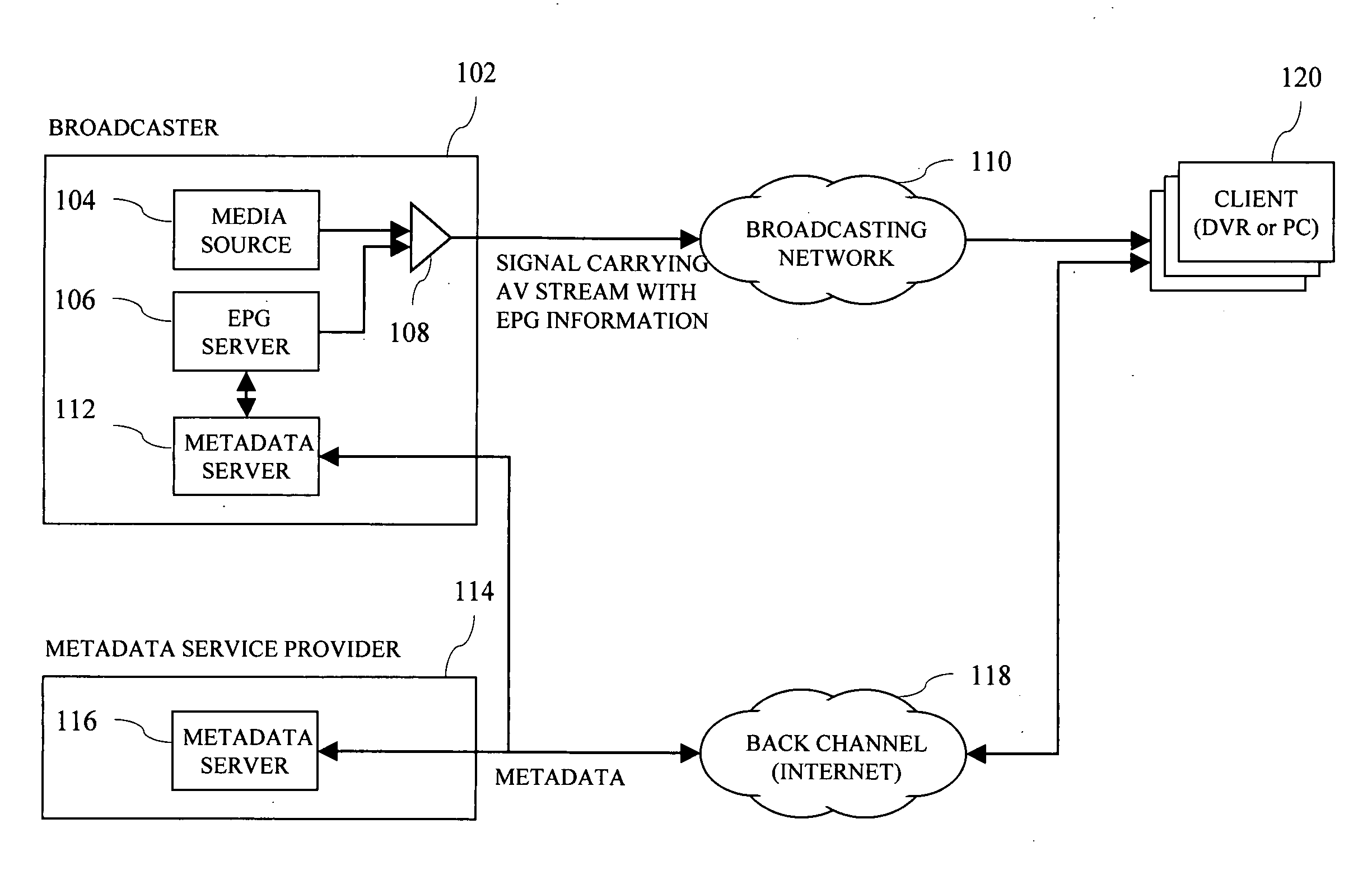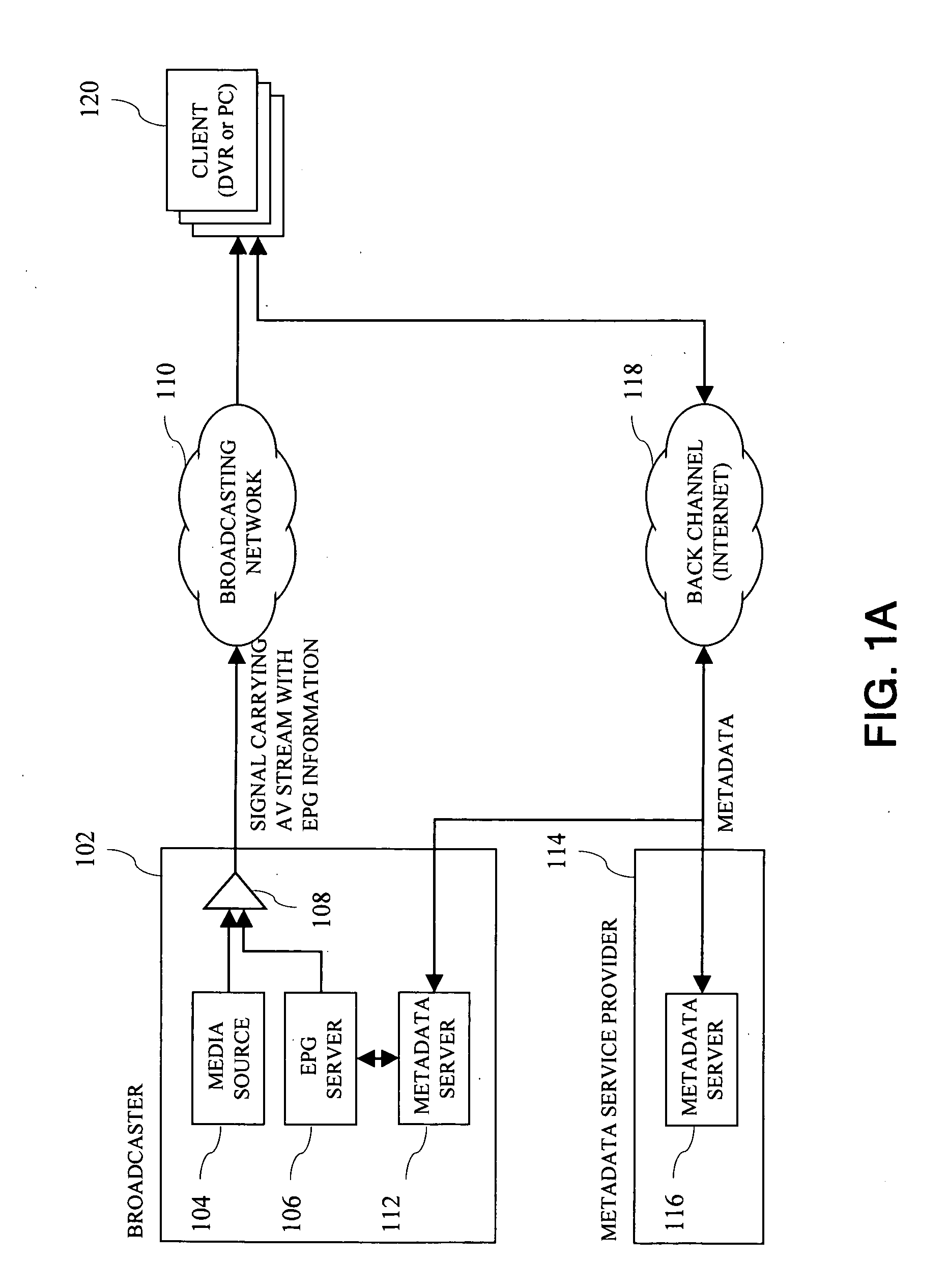Since the P-picture can be used as a reference picture for B-pictures and future P-pictures, it can propagate coding errors.
The
interlaced video method was developed to save bandwidth when transmitting signals but it can result in a less detailed image than comparable non-interlaced (progressive) video.
However the slice structure in MPEG-2 is less flexible compared to H.264, reducing the coding efficiency due to the increasing quantity of header data and decreasing the effectiveness of prediction.
To access to a specific segment without the segmentation information of a program, viewers currently have to linearly search through the program from the beginning, as by using the fast forward button, which is a cumbersome and time-consuming process.
However, one potential issue is, if there are no business relationships defined between the three main provider groups, as noted above, there might be incorrect and / or unauthorized mapping to content.
This could result in a poor user experience.
However, CRIDs require a rather sophisticated resolving mechanism.
Unfortunately, it may take a long time to appropriately establish the resolving servers and network.
However, despite the use of the three compression techniques in TV-Anytime, the size of a compressed TV-Anytime
metadata instance is hardly smaller than that of an equivalent EIT in ATSC-PSIP or DVB-SI because the performance of Zlib is poor when strings are short, especially fewer than 100 characters.
Without the
metadata describing the program, it is not easy for viewers to locate the video segments corresponding to the highlight events or objects (for example, players in case of sports games or specific scenes or actors, actresses in movies) by using conventional controls such as fast forwarding.
These current and existing systems and methods, however, fall short of meeting their avowed or intended goals, especially for real-time indexing systems.
However, with the current state-of-art technologies on image understanding and
speech recognition, it is very difficult to accurately detect highlights and generate semantically meaningful and practically
usable highlight summary of events or objects in real-time for many compelling reasons:
First, as described earlier, it is difficult to automatically recognize diverse semantically meaningful highlights.
For example, a keyword “touchdown” can be identified from decoded closed-caption texts in order to automatically find touchdown highlights, resulting in numerous false alarms.
Second, the conventional methods do not provide an efficient way for manually marking distinguished highlights in real-time.
Since it takes time for a
human operator to type in a title and extra textual descriptions of a new highlight, there might be a possibility of missing the immediately following events.
However, the use of PTS alone is not enough to provide a unique representation of a
specific time point or frame in broadcast programs since the maximum value of PTS can only represent the limited amount of time that corresponds to approximately 26.5 hours.
On the other hand, if a frame accurate representation or access is not required, there is no need for using PTS and thus the following issues can be avoided: The use of PTS requires
parsing of PES
layers, and thus it is computationally expensive.
Moreover, most of digital broadcast streams are scrambled, thus a real-time indexing
system cannot access the
stream in frame accuracy without an authorized descrambler if a
stream is scrambled.
In the proposed implementation, however, it is required that both head ends and receiving
client device can
handle NPT properly, thus resulting in highly complex controls on time.
However, it is much more difficult to automatically index the semantic content of image / video data using current
state of art image and video understanding technologies.
For each TV program, it also shows a
list of still images generated from the video
stream of the program and additional information such as the date and time the program aired, but the still image corresponding to the start of each program does not always match the actual start (for example, a title image) image of the broadcast program since the
start time of the program according to
programming schedules is not often accurate.
These problems are partly due to the fact that
programming schedules occasionally will change just before a program is broadcast, especially after live programs such as a live sports game or news.
However, the
typing-in text whenever video search is needed could be inconvenient to viewers, and so it would be desirable to develop more appropriate search schemes than those used in
Internet search engines such as from Google and Yahoo that are based on query input typed in by users.
First, it might not be easy to readily identify one program from others by the briefly listed
list information.
With a large number of recorded programs, the brief
list may not provide sufficiently distinguishing information to facilitate
rapid identification of a particular program.
Second, it might be hard to infer the contents of programs only with
textual information, such as their titles.
Third, users might want to memorize some programs in order to play or replay them later for some reasons, for example, they may not want to view the whole program yet, they want to view some portion of the program again, or they want to let their family members view the program.
These efforts to produce effective posters and cover designs require cost, time and manpower.
(Thus, prior used and disclosed use of captured thumbnail images for DVR and PC do not have the effective form, aspect and “feel” or GUI of posters and cover designs.)
 Login to View More
Login to View More  Login to View More
Login to View More 


